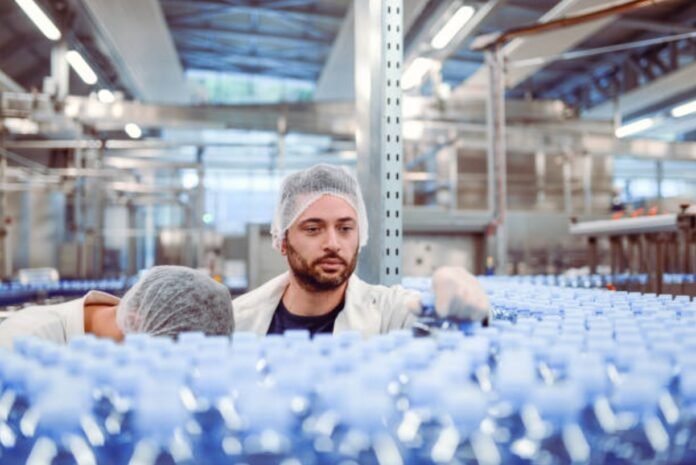If you’ve ever wondered how the water bottling industry works or if you could be a part of it, read on for a detailed guide. In this article, we’ll cover everything from the basics of the business to what you need to know in order to get started. So whether you’re looking to get into this booming industry or just want to know more about it, read on!
The Different Types of Water Bottles
The water bottle industry is a $30 billion dollar industry and it’s only going to grow. The market for bottled water is growing at a rate of 2 percent each year and by 2022, the market will be worth $35 billion. With all of the different types of water bottles on the market, it can be hard to know which one is best for you. In this guide, we’re going to take a closer look at the different types of water bottles and help you decide which one is best for you.
Glass Water Bottles: Glass water bottling line are classic and iconic. They’re beautiful and they hold up well in the heat. They’re also easy to clean but they do tend to break if you drop them. That said, they’re still one of the most popular types of water bottles on the market.
Plastic Water Bottles: Plastic water bottles are more lightweight than glass water bottles and they’re also more durable. That said, they can start to smell bad after a while and they don’t always hold up in the heat as well as glass water bottles do. They’re also easier to clean than glass water bottles but they do tend to crack if you drop them.
Rubber Water Bottles: Rubber water bottles are a new type of water bottle that’s gaining in popularity. They’re made out of rubber instead of plastic and they have a silicone seal that keeps the water cold for hours. They’re also leak-proof and they don’t break like plastic water bottles do. They’re not as popular as plastic or glass water bottles, but they may be the perfect choice for you if you want the best durability and coldness possible.
Types of Materials Used in Water Bottles
Bottled water is made up of many different types of materials. Here’s a closer look at some of the most common:
-Plastic: Most water bottles are made from plastic. This material is lightweight, durable, and can be recycled. Some water bottles are also made from other materials, like metal, but they’re less common.
-Glass: Glass water bottles are heavier than plastic ones and can be more expensive, but they’re also more shatter-resistant and have a nicer appearance. They’re not as popular as plastic water bottles because they don’t tend to last as long.
-Reusable Bottles: Some people prefer to use reusable water bottles instead of disposable ones. These bottles can be made from a variety of materials, including glass, metal, or plastic. They usually come with a carrying case or strap so you can take them with you wherever you go.
The Manufacturing Process of a Water Bottle
The manufacturing process of a water bottle starts with raw materials such as plastic, glass, and aluminum. The materials are melted and poured into molds to create the various parts of the water bottle. After the molds are created, the parts are cooled and cut into precise shapes. The pieces are then welded together and painted. Finally, the water bottle is finished with a label and packaging.
The Environmental Impact of the Water Bottling Industry
The water bottle industry is one of the most heavily relied-upon industries in the world. In fact, according to The World Bank, the water bottle industry generates $1 trillion in economic value each year. However, the water bottle industry also has a large environmental impact. Here is a closer look at the environmental impact of the water bottle industry:
The water bottle industry generates more than 30 million tons of trash every year. This trash includes not just plastic bottles, but also packaging and other materials used to make the bottles.
The water bottle industry leads to deforestation. When trees are cut down to make room for new factories or warehouses, they release carbon into the atmosphere.
The water bottle industry contributes to climate change. When plastic bottles are left in landfills, they can take centuries to decompose and release their harmful chemicals into the environment.
The Consumer Impact of the Water Bottling Industry
The bottled water industry is a growing business, with revenues projected to reach $24.9 billion by 2022. However, the bottled water industry also has a negative impact on the environment. A guide to the water bottling industry provides a closer look at the consumer impact of the water bottle industry.
The bottled water industry produces about 330 million gallons of plastic each day, which is more than all of the oil used in the United States annually. The manufacture and use of plastic bottles requires fossil fuels, which releases greenhouse gases that contribute to climate change.
Bottled water also contributes to food waste. According to the Natural Resources Defense Council, Americans throw away about half a million tons of food each day, and bottled water makes up a significant portion of that waste. Bottled water is often marketed as an environmentally-friendly choice, but in reality it is one of the most harmful ways to consume beverages.
Conclusion
The water bottling line industry is booming, and with good reason. Not only are they eco-friendly and convenient, but they also offer a number of health benefits. In this article, we will take a closer look at the water bottle industry, outlining its key players and what makes them tick. We will also cover some of the most important issues facing the water bottle industry today and how businesses can address them. So if you’re wondering where all the plastic cups are going, read on to find out more!

